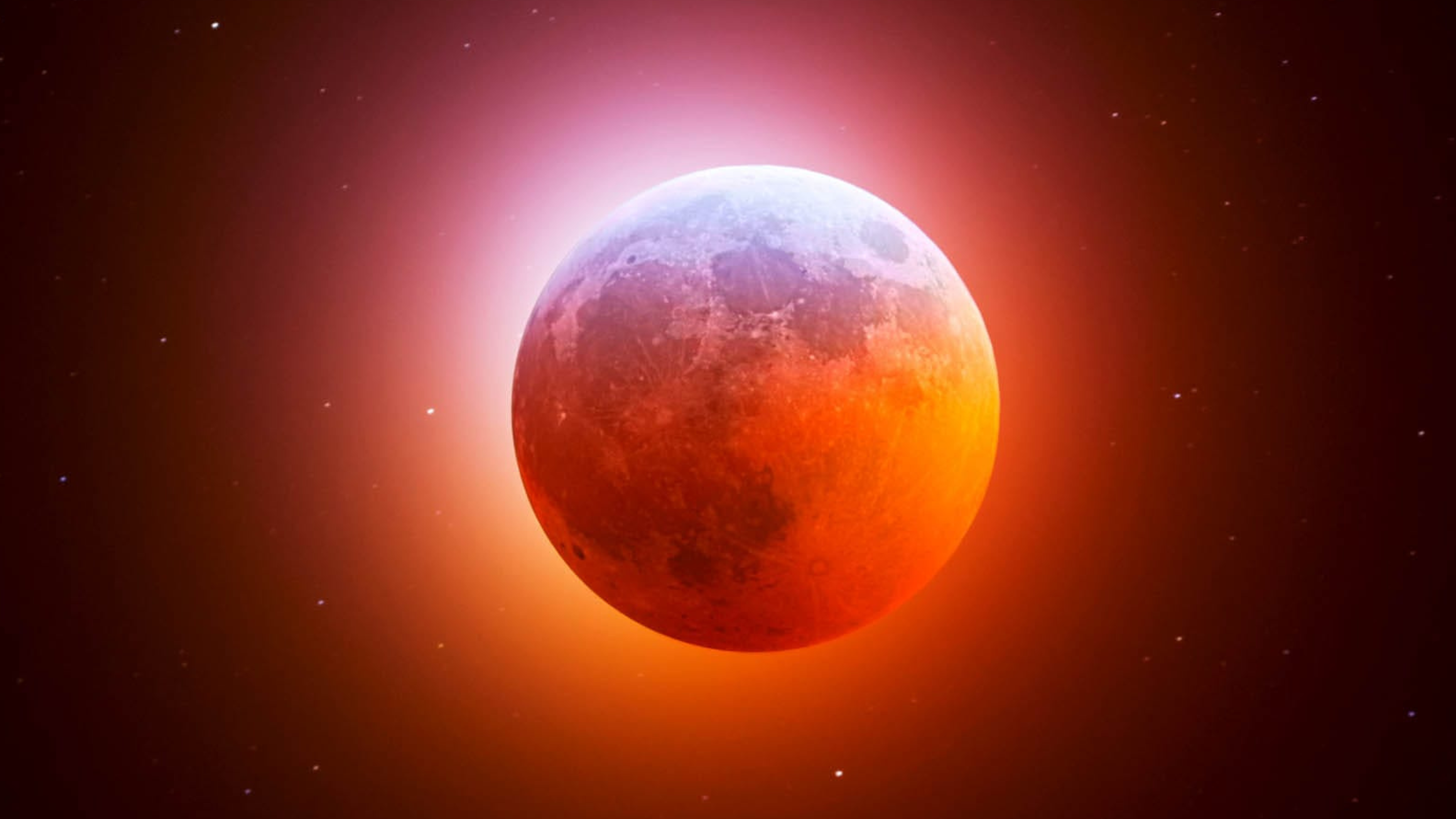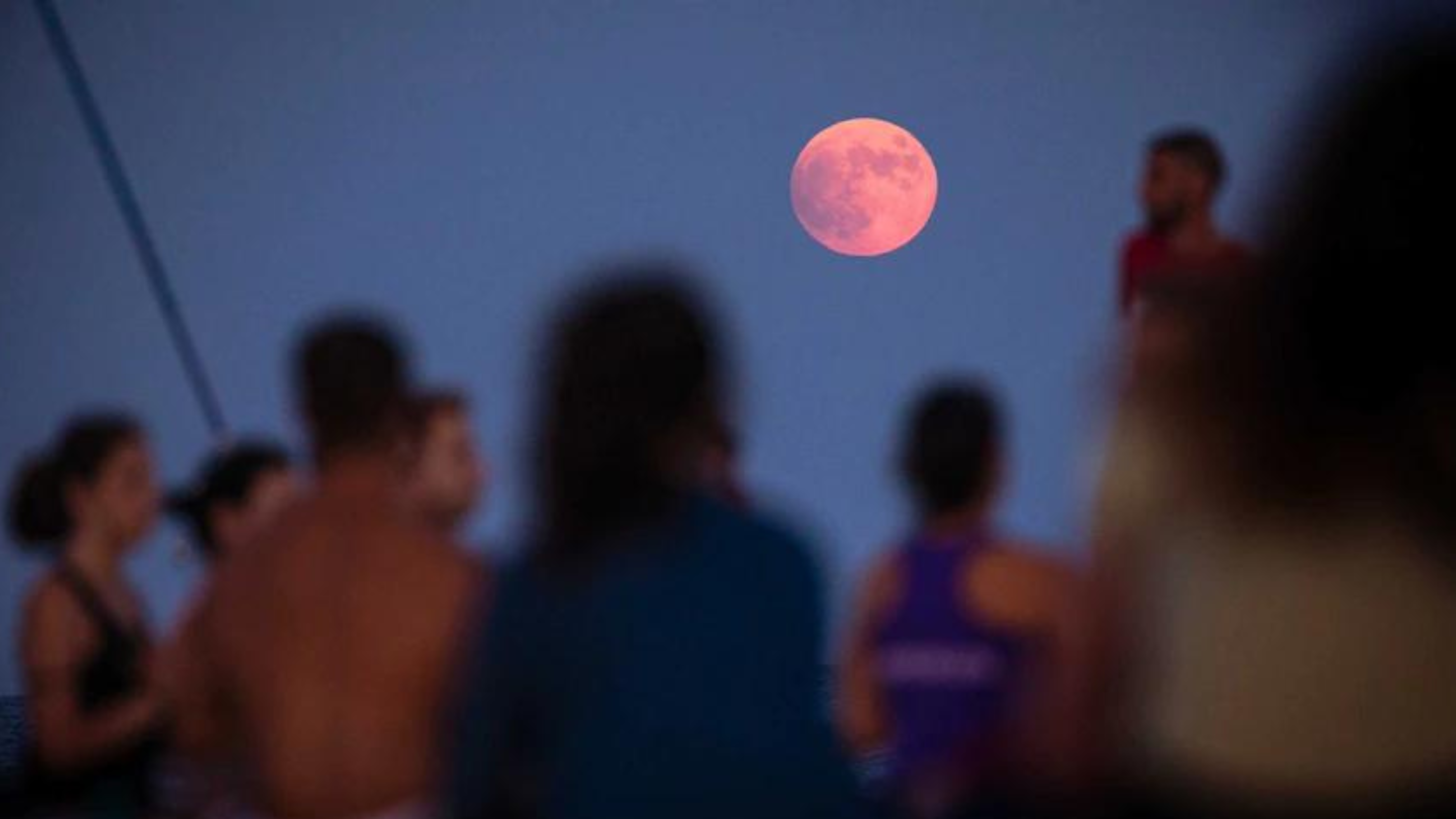See Total Lunar Eclipse From Australia And New Zealand In November
As light reaches the Moon and passes through the dust in the Earth's atmosphere, it turns red. November brings us a spectacular celestial event: the Moon will turn reddish as the Earth passes between it and the Sun. See the Total Lunar Eclipse from Australia and New Zealand in November. Evening people across Australia and New Zealand will be treated to a total lunar eclipse, weather permitting. It’s an opportunity not to be missed, as the next one won’t be visible from the region until 2025.
Author:Suleman ShahReviewer:Han JuNov 08, 202243.9K Shares586K Views

As light reaches the Moon and passes through the dust in the Earth's atmosphere, it turns red. November brings us a spectacular celestial event: the Moon will turn reddish as the Earth passes between it and the Sun.
See the Total Lunar Eclipsefrom Australia and New Zealand in November. Evening people across Australia and New Zealand will be treated to a total lunar eclipse, weather permitting. It’s an opportunity not to be missed, as the next one won’t be visible from the region until 2025.
Read through this article as we give you a guide on how to get the best view of it.
See Total Lunar Eclipse In November
A lunar eclipse occurs when the moon passes through the shadow of the Earth. A partial eclipse occurs when the moon only partially enters the shadow. During a total eclipse, the moon is completely immersed and glows reddish/orange.
The totality period, when the moon is completely immersed in shadow, will last 85 minutes on Tuesday, November 8, 2022.
Because the only light reaching the moon's surface will first pass through the Earth's atmosphere, the moon will appear red. The color will be determined by how dusty the Earth's atmosphere is.
It'll be a fantastic experience to share with family and friends, especially since you won't need any special equipment to see it. It's also safe to look at, unlike solar eclipses, which require special precautions when viewing the sun.
The next total lunar eclipse will occur three years later, on March 14, 2025, according to NASA. During that time, however, the world will continue to see partial lunar eclipses.
Guide To Get The Best View Of Lunar Eclipse
Video unavailable
This video is unavailable: Original link to video
The lunar eclipse will be visible from anywhere on Earth's night side. Because the Moon rises later than the eclipse begins in some locations, it cannot be seen.
The entire lunar eclipse (partial phase, full phase, partial phase) will be visible from most of North America, New Zealand, many Pacific Ocean islands, the east coast of Australia, most of Japan, the eastern regions of Russia, South Korea, East and Northeast China, and the Norwegian archipelago Svalbard in November 2022.
A lunar eclipse, unlike a solar eclipse, can be observed with the naked eye. A lunar eclipse does not require any special equipment to observe, though binoculars or a telescope will improve the view and the red color.
There will also be several live streams of the event on YouTube. TimeandDate.com will broadcast the entire event live from its mobile observatory in Roswell, New Mexico, and will accept live feeds from San Diego, California, and Perth, Australia. The live stream will begin at 4:00 a.m. EST (1:30 pm IST).
Here are some of the big cities to observe the whole lunar eclipse in November 2022:
- Vancouver, British Columbia, Canada
- Calgary, Alberta, Canada
- Seattle, Washington, USA
- Oakland, California, USA
- Honolulu, Hawaii, USA
- Washington, D.C., USA
- New York, New York, USA
- Chicago, Illinois, USA
- Mexico City, Mexico
- Melbourne, Australia
- Sydney, Australia
- Auckland, New Zealand
- Wellington, New Zealand
- Beijing, China
- Seoul, South Korea
- Tokyo, Japan
- Kolkata, India
People Also Ask
What Time Is The Lunar Eclipse In The Alaska Time Zone?
The partial phase begins at 00:09 a.m. AKST on November 8 for the Alaska time zone (GMT-9). The full phase occurs at 01:16 a.m. AKST, with the maximum point occurring at 01:59 a.m. AKST. The entire phase concludes at 02:41 a.m. The partial phase continues until 03:49 a.m. AKST.
What Time Is The Lunar Eclipse In New Zealand?
The partial phase begins at 22:09 NZDT on November 8 for the New Zealand time zone (GMT+13). At 23:16 NZDT, the full phase is reached, with the maximum point at 23:59 NZDT. The full phase ends on November 9 at 00:41 NZDT and is followed by the partial phase until 01:49 NZDT on November 9.
How Long Does The Lunar Eclipse Last?
The lunar eclipse's visible path (partial phase, full phase, partial phase) lasts 3 hours and 40 minutes. On November 8, a total lunar eclipse will last 1 hour and 25 minutes, from 10:16 to 11:41 GMT.
Conclusion
Lunar eclipses serve as a reminder that we live on a moving planet in space. On November 8, 2022, there will be a total lunar eclipse. The Moon will turn red for 85 minutes when the Earth's shadow completely covers it. Don't miss out on seeing the spectacular total lunar eclipse.
Perhaps you'll have your own moment of awe and wonder at how astronomycan make us feel small while also connecting us to something much grander.

Suleman Shah
Author
Suleman Shah is a researcher and freelance writer. As a researcher, he has worked with MNS University of Agriculture, Multan (Pakistan) and Texas A & M University (USA). He regularly writes science articles and blogs for science news website immersse.com and open access publishers OA Publishing London and Scientific Times. He loves to keep himself updated on scientific developments and convert these developments into everyday language to update the readers about the developments in the scientific era. His primary research focus is Plant sciences, and he contributed to this field by publishing his research in scientific journals and presenting his work at many Conferences.
Shah graduated from the University of Agriculture Faisalabad (Pakistan) and started his professional carrier with Jaffer Agro Services and later with the Agriculture Department of the Government of Pakistan. His research interest compelled and attracted him to proceed with his carrier in Plant sciences research. So, he started his Ph.D. in Soil Science at MNS University of Agriculture Multan (Pakistan). Later, he started working as a visiting scholar with Texas A&M University (USA).
Shah’s experience with big Open Excess publishers like Springers, Frontiers, MDPI, etc., testified to his belief in Open Access as a barrier-removing mechanism between researchers and the readers of their research. Shah believes that Open Access is revolutionizing the publication process and benefitting research in all fields.

Han Ju
Reviewer
Hello! I'm Han Ju, the heart behind World Wide Journals. My life is a unique tapestry woven from the threads of news, spirituality, and science, enriched by melodies from my guitar. Raised amidst tales of the ancient and the arcane, I developed a keen eye for the stories that truly matter. Through my work, I seek to bridge the seen with the unseen, marrying the rigor of science with the depth of spirituality.
Each article at World Wide Journals is a piece of this ongoing quest, blending analysis with personal reflection. Whether exploring quantum frontiers or strumming chords under the stars, my aim is to inspire and provoke thought, inviting you into a world where every discovery is a note in the grand symphony of existence.
Welcome aboard this journey of insight and exploration, where curiosity leads and music guides.
Latest Articles
Popular Articles
